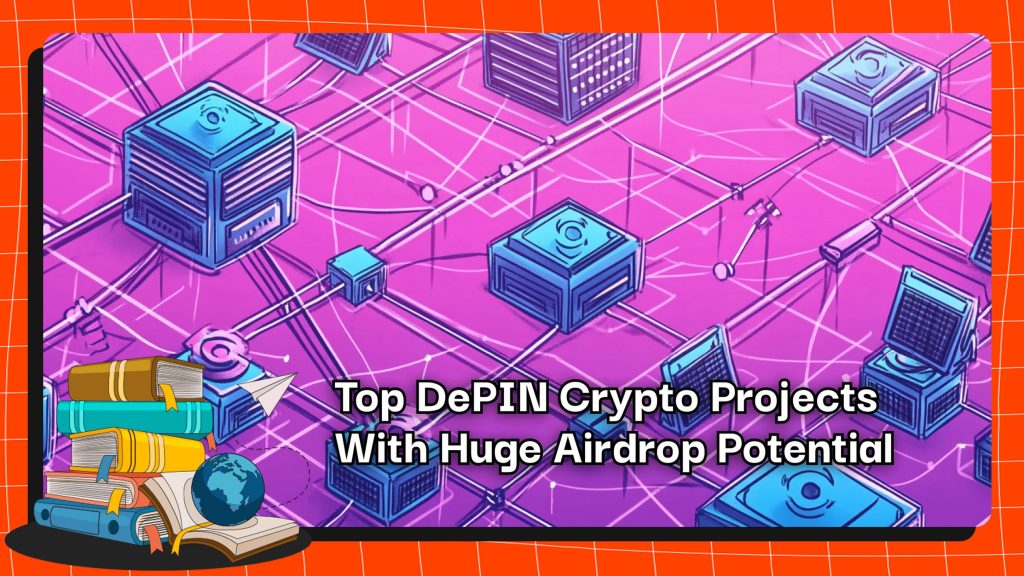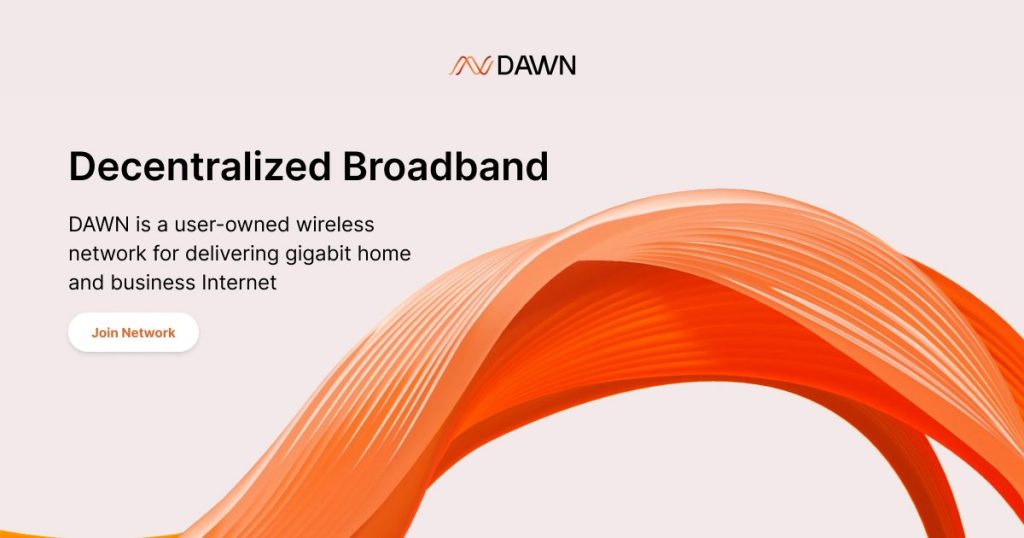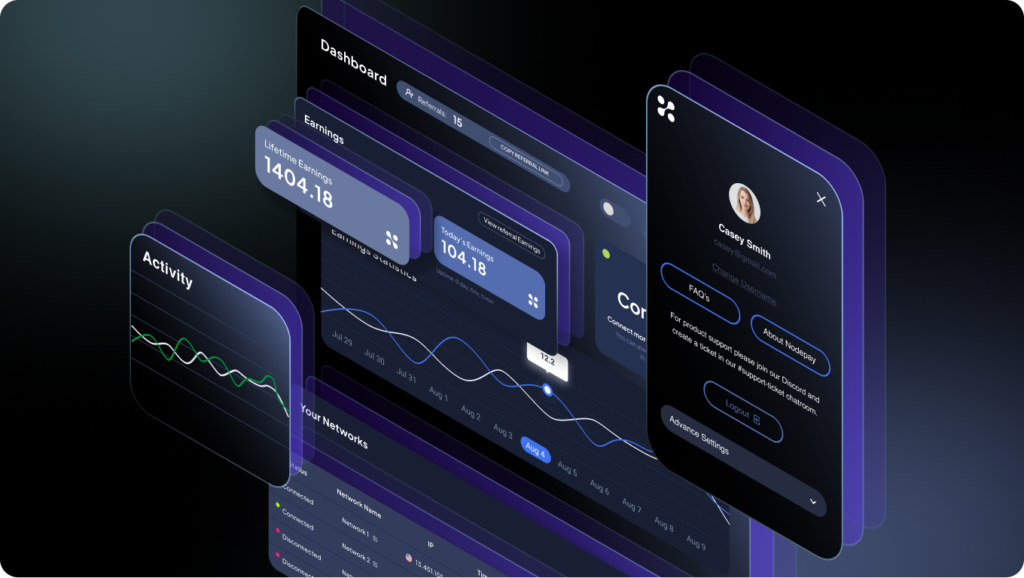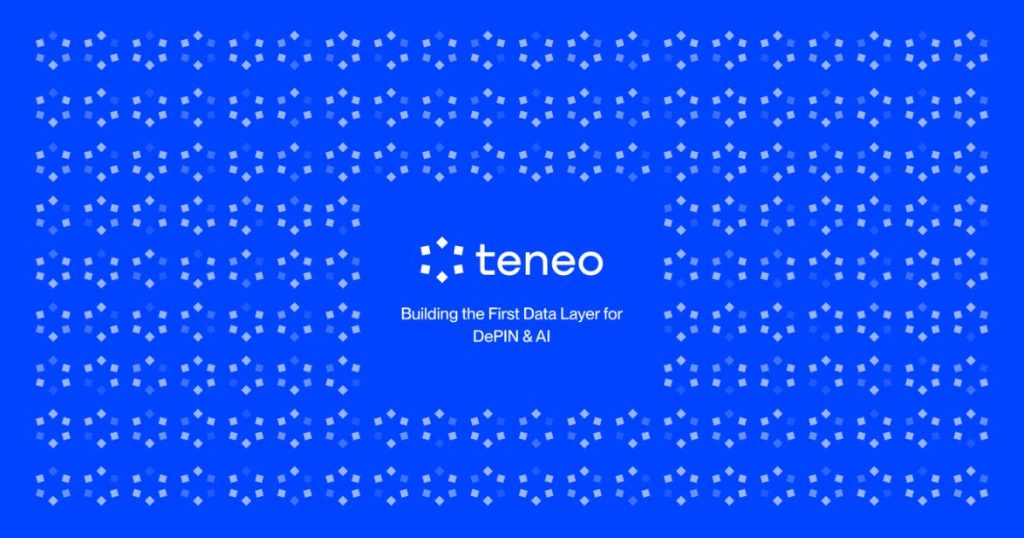As interest in decentralized physical infrastructure networks (DePIN) continues to surge, investors are keen to identify promising projects in this innovative sector. This Coincu’s article presents a curated list of the top DePIN crypto projects with airdrop potential in 2025.

What is DePIN?
DePIN, Decentralized Physical Infrastructure Networks represent a fresh-faced phenomenon that has gained considerable momentum within the cryptocurrency space by rapidly emerging as one of the most dynamic narratives within the sector. DePIN deploys blockchain with token incentives to enable the development of real-world physical infrastructures.
Key Components of DePIN
Read more: Real World Assets – Find The Next Hidden Gems
List of Top Crypto DePIN Projects
DAWN: Revolutionizing Internet Access with Decentralized Solutions on the Solana
Gradient Network: Empowering Blockchain Interoperability
Nodepay: Connecting Users to AI through Decentralized Bandwidth Sales
BlockMesh: Pioneering Decentralized Bandwidth Trading on Solana
Teneo Protocol: Innovating Data Usage with a Dedicated Layer
1. DAWN
DAWN is a DePIN crypto project built on the Solana blockchain that offers users a decentralized internet. The protocol will enable the building of a user-operated network, and thanks to advanced wireless technology, both households and businesses will have much cheaper access to internet resources.
DAWN is an open-source project that enables users to sell and buy internet bandwidth with other people in their neighbourhood using commodity router hardware.
The infrastructure behind DAWN is managed by Andrena, the parent company of the project, which empowers users to actively participate in the internet ecosystem without depending on traditional telecommunications providers or centralized cloud services.


Andrena raised a total of $33 million through two funding rounds: Series A for $15 million and an extension for $18 million. Some of the major investors in Andrena include Dragonfly Capital, Wintermute, and ParaFi Capital, among others.
Users can contribute bandwidth towards a certain cause and in return get points, although there is an airdrop available for future functionality. This can be likened to Grass-a similar DePIN project of bandwidth contribution.
Read more: DAWN Review: DePIN Project Raises Huge Funds on Solana Ecosystem
2. Gradient Network
Gradient Network is a DePIN crypto project committed to changing how computing power and staking solutions work within a blockchain environment. It bridges seamless integrations between major blockchains like Ethereum, Bittensor, and Solana in the interoperability bid.
The protocol enables cloud computing decentralization, tapping resources that are not fully utilized for computing, therefore allowing access to AI-driven content distribution and serverless functions. Gradient mainly focuses on the reduction of centralization, enhancement of infrastructure, and user privacy.


Users who want to participate in the network and, with it, get eligible for an airdrop will have to set up a Gradient Sentry Node.
To incentivize users to keep their nodes up, they can earn points by completing easy tasks. Gradient Network will be an interesting opportunity to engage users in the future of decentralized computing, with multiple venture capital investment funds onboard.
Read more: Gradient Network Review: A New Era of Decentralized Compute on Solana
3. Nodepay
Nodepay is one of the most recent DePIN crypto project bandwidths for AI training across industries. Nodepay empowers individual users to sell unused internet bandwidth in supply to various businesses and organizations that are interested in AI research, financial services, and healthcare, among other industries.
The project aims to build a knowledge-based AI ecosystem that supports secure and scalable development. On September 28, 2024, Nodepay secured investment from top firms, including Animoca Brands, Jump Crypto, and Elevate Community Ventures.


To incentivize users, Nodepay has introduced a seasonal program where participants can earn NODE points for simply keeping their browsers open.
The team behind Nodepay has also announced that NODE points can be converted into NODE tokens in the future, thus giving users a stake in the network and further enhancing engagement in this decentralized ecosystem.
4. BlockMesh
BlockMesh is among the pioneering DePIN crypto projects that entered the Solana ecosystem. The basic conception of BlockMesh lies in the development of a decentralized platform where users will either sell their wasted Internet bandwidth or buy it.
The innovative approach has drawn plenty of attention, landing BlockMesh a solid position in the Solana Renaissance Hackathon, held jointly by Solana and Colosseum, and it won first prize, netting $30,000.


Currently, in the development phase, BlockMesh allows users to share their extra bandwidth through a browser extension. Contributions are incentivized, as participants will receive BlockMesh points for utilizing their free network capacity.
Due to the fact that the idea is unique and supported by an effort to commit to the DePIN developments, BlockMesh is doing quite well en route to a decentralized infrastructure of the Internet.
Read more: BlockMesh Network Review: Transforming Unused Bandwidth into Passive Income
5. Teneo Protocol
Teneo Protocol introduces new boundaries concerning data usage by introducing the very first dedicated data layer for DePIN crypto projects.
The protocol allows interaction between data from the digital and physical worlds while developing an end-to-end ecosystem that will involve top-notch data gathering, AI analysis, and blockchain technology.


The protocol is designed to be easily installed on any device and thus invites participation on a global scale. According to Teneo Protocol, the network currently sits on 35,000 active nodes, each building a strong and resilient data infrastructure.
Users who are node operators participate in rewarding TENEO tokens for their activity in securely gathering and sharing data through the network. Because the project is still at an early stage, early adopters do have the privilege of greater opportunities to build up points.
Conclusion
The DePIN model came into being whereby participants provided the computational resources that guarantee the operability of decentralized systems.
From here on, the development of DePIN crypto projects is going to be two-fold: one in terms of more decentralization and another in regard to the extended functionality of tokens beyond incentivization toward governance and transaction utility.
With the above potential, hopefully, the DePIN crypto projects we ranked will be useful for your investment portfolio.




